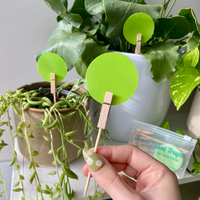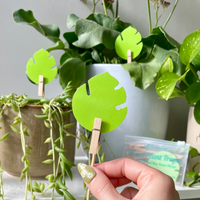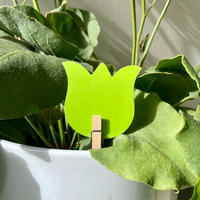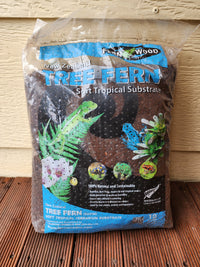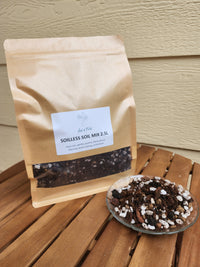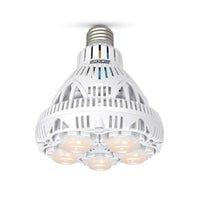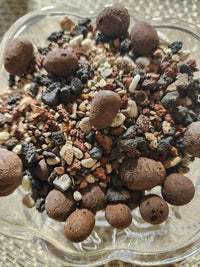Whether you’re battling root rot or constant repotting, NZ fern fibre for orchids offers a proven solution that balances moisture, aeration and longevity. In this guide, you’ll discover what makes New Zealand fern fibre unique, how it stacks up against bark, moss and other substrates, and practical steps to repot, water and fertilise your orchids for vibrant blooms. We’ll also explore which genera thrive best and why this sustainably sourced medium aligns with eco-friendly gardening.
What Makes New Zealand Fern Fibre Unique for Orchid Growing?
What is NZ Fern Fibre and how is it sustainably sourced?
NZ Fern Fibre is a premium growing medium made from shredded New Zealand tree ferns harvested under managed-plantation protocols to ensure minimal ecological impact. Fernwood NZ’s process trims only mature fronds, allowing the parent plants to regrow and maintain forest health. This ethical sourcing approach supports continuous yields without chemical treatments.
Harnessing this renewable cycle lays the foundation for all other benefits discussed below.
Sustainable Sourcing and Environmental Impact
Studies on sustainable forestry practices highlight the importance of responsible harvesting methods in maintaining biodiversity and ecosystem health. Selective harvesting, as practised by Fernwood NZ, minimises environmental impact and ensures the long-term availability of the resource, aligning with eco-friendly gardening principles.
Which key properties of NZ Fern Fibre benefit orchid health?
NZ Fern Fibre combines moisture control, aeration, neutral pH and durable texture to create an optimal root environment.
- Superior capillary action distributes water evenly.
- An open fibrous matrix prevents compaction.
- Neutral pH supports nutrient uptake.
- Soft, spongy strands last up to five years
Benefits of Tree Fern Fibre for Orchids
Research indicates that tree fern fibre provides excellent aeration and drainage, which are crucial for healthy orchid root development. This is due to the fibre's unique structure, which prevents compaction and allows for optimal oxygen flow to the roots, reducing the risk of root rot and promoting vigorous growth.
These characteristics work in concert to foster vigorous root growth while reducing stress from fluctuating moisture and acidity.
How does NZ Fern Fibre support root health and reduce root rot?
By marrying high airflow with gentle water retention, NZ Fern Fibre keeps roots moist but never waterlogged. The fibrous structure drains excess water rapidly yet holds just enough moisture to sustain epiphytic orchids. Beneficial microbes thrive in this balanced environment, outcompeting pathogens that cause rot.
Maintaining this root-friendly zone translates directly into stronger plants and fewer fungal issues.
How Does NZ Fern Fibre Compare to Other Orchid Growing Media?
When measured against conventional substrates, NZ Fern Fibre delivers superior drainage, durability and biological support for epiphytic orchids.
What advantages does NZ Fern Fibre have over bark and sphagnum moss?

Compared with orchid bark and sphagnum moss, NZ Fern Fibre resists compaction longer, regulates moisture more evenly and sustains beneficial microflora.
| Media | Attribute | Rating |
|---|---|---|
| NZ Fern Fibre | Moisture Retention | High and consistent |
| Bark | Moisture Retention | Moderate and uneven |
| Sphagnum Moss | Moisture Retention | Good at first, breaks down rapidly |
| NZ Fern Fibre | Aeration | Excellent open-cell structure |
| Bark | Aeration | Good initially, compacts over time |
| Sphagnum Moss | Aeration | Fair, tends to mat and restrict air |
NZ Fern Fibre’s combination of stable drainage and microbe-friendly fibres gives orchids a clear edge over these traditional options.
How does NZ Fern Fibre outperform LECA, charcoal, and coconut coir?
By offering natural biological activity and unmatched longevity, NZ Fern Fibre stands out among soilless alternatives.
| Media | Attribute | Value |
|---|---|---|
| NZ Fern Fibre | Longevity | Up to 5 years |
| LECA | Longevity | 2–3 years |
| Charcoal | Longevity | 1–2 years |
| Coconut Coir | Longevity | 1–2 years (prone to compaction) |
This durability reduces repotting stress and delivers ongoing benefits without synthetic substrates.
Why does NZ Fern Fibre reduce repotting frequency compared to other media?
Its slow decomposition and resilient fibrous matrix let orchids remain potted for multiple seasons. Rare breakdown means roots stay undisturbed, decreasing the need for transplanting. Mycorrhizal fungi within the fibres also promote nutrient exchange, further extending media life.
As a result, you’ll spend less time repotting and more time enjoying healthy, blooming orchids.
How Can Orchid Enthusiasts Use NZ Fern Fibre for Best Results?
Using NZ Fern Fibre for both repotting and maintenance is straightforward once you know the key steps and adjustments.
What are the step-by-step repotting instructions using NZ Fern Fibre?

Start by soaking the fibre in clean water for 10–15 minutes to ensure uniform hydration.
- Gently remove the orchid from its old media, shaking off debris.
- Place a layer of moist NZ Fern Fibre at the pot base for drainage.
- Position the orchid and surround roots with fresh fibre, firming lightly.
- Anchor with stakes or wire as needed, then water until excess drains.
Following this sequence delivers a stress-free transition and optimises root contact with the new substrate.
How should watering and fertilising be adjusted for orchids in fern fibre?
Orchids potted in NZ Fern Fibre require less frequent watering and light, balanced fertiliser to match the medium’s moisture profile.
- Water when the top fibrous layer changes from dark to light colour
- Monitor pot weight as a hydration gauge.
- Apply a quarter-strength orchid fertiliser every four to six weeks
Adapting these practices ensures your plants access nutrients without the risk of salt build-up or drought stress.
Which Orchid Types Thrive Best in NZ Fern Fibre?
Epiphytic orchids such as Phalaenopsis, Cymbidium and Paphiopedilum respond especially well to fern fibre’s unique structure and microbiome support.
How does NZ Fern Fibre benefit Phalaenopsis orchids?
Phalaenopsis orchids enjoy enhanced root proliferation and stable moisture, resulting in larger, longer-lasting blooms. Its gentle aeration prevents base rot while supporting aerial roots common in moth orchids.
This tailored environment translates into stronger growth and more frequent flowering cycles.
What are the effects of NZ Fern Fibre on Cymbidiums and Paphiopedilums?
For Cymbidiums and Paphiopedilums, fern fibre’s balanced moisture and high airflow encourage robust pseudobulb development and disease-free roots. The natural mycorrhiza within the fibres accelerates nutrient uptake, leading to healthier foliage and flower spikes.
These genera thrive when provided with both support and breathing room at the root zone.
Why is NZ Fern Fibre a Sustainable and Environmentally Responsible Choice?
By sourcing materials from managed plantations and avoiding chemical processing, NZ Fern Fibre stands out as an eco-friendly substrate.
How is Fernwood NZ’s fern fibre ethically harvested?
Fernwood NZ practices selective trimming of mature tree-fern fronds, leaving the core intact for regrowth. This method preserves native habitats, avoids clear-felling and maintains biodiversity.
Such stewardship underpins the product’s sustainability credentials.
What environmental benefits does using NZ Fern Fibre offer orchid growers?
Choosing NZ Fern Fibre reduces reliance on non-renewable bark sources and peat alternatives.
Plantation management supports carbon sequestration, while the absence of synthetic additives minimises chemical runoff.
Embracing this medium aligns your orchid care with broader eco-conservation goals.
Leaf of Faith’s expert recommendations make it easier than ever to provide your orchids with a lasting, sustainable growing medium. Happy gardening!


